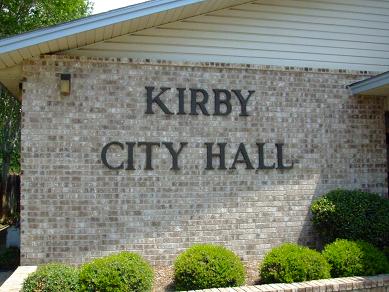

Kirby was named after the Kirby yards, which were four acres located along the Southern Pacific Railroad tracks. It is
believed that the Kirby community was founded in the beginning of the 1900's, although the city was not incorporated until
1955. Some of the first citizens of Kirby were the Anton Rittiman family, Mrs. Louise Ackerman, the Fritz Stolte family,
the F.J. Eisenhauer family, and the Milton Hoenke family. Current San Antonio residents and Kirby locals may have never heard of
these families but their last names are found in Kirby and surrounding areas as the street names! This is what makes
history so interesting. You begin to get a better understanding of your neighborhood and yourself.
Kirby was originally a farming community. The first settlers were mainly of German descent. Many German immigrants lived
in Kirby. It is safe to say that Kirby was one of the settlements for the strong migration of Europeans in the late
1800's - 1950's. Thousands of Europeans came to America to escape religious persecution, to claim new land as their own,
or because of job opportunities. German Christian Stolte was the first owner of what later on became Kirby landmark
T.D. Pfiels General Merchandise Store.


In the Clara Weller text,"My Town Kirby," old manager T.D. Pfiel comments on the fast changing community of Kirby. He
mentions Kirby's population in 1920 was only 18 people who were primarily farmers and that most transactions in his
store were made in German language. In as early as 1950, the town was tranformed from an agriculture community into a
military community. At this time, Kirby's population grew to 600, mostly consisting of military men and women who
worked at Randolph AFB and their families. As time passed, less and less people used the German language or
understood it. That part of Kirby's culture was lost. The new residents spoke English and Spanish. Over time, Kirby,
like the rest of the nation, changed into a more urban community. Employment was now found mostly outside of the city,
in San Antonio facilities and its military bases rather than on Kirby's nearby farms. There were still operating farms in
the 1950's, but with the invention of the tractor, stores were forced to replace the old farming equipment such as
harnesses for farm horses, with new farming hardware to keep up with the times.
The final nail in the coffin contributing to the death of farms in Kirby was the big drought of 1957. This drought
resulted in crop failures that lasted two years. This was economically devestating for farm owners. With the urbanization spreading across the United States, farmers realized they were not obligated to run a farm to make a living
for their families and themselves. Fed up with the difficulties of the farm life, farmers began to sell their
properties. Replacing these lands were new streets and tons of houses. Kirby became officially urbanized. Today, the
only land free of paved streets and neighborhood housing is found down Ackerman Road and is only appoximately 1/3
of a mile long.
Every Texas town had to have a local cotton gin at a point in their history, and Kirby was no exception. In 1926, the
city's cotton gin was owned by Carl Matsch (who bought it from founding father Christian Stolte). Other local
businesses included a butcher shop owned by Chris Schick, a garage by Frank Jaenke, and a grocery owned by
Bernardo Fenske.

Kirby is such a small town, there are few historical landmarks. For the people of the city, the Kirby Veterans of Foreign
Wars Post 2059 is considered a landmark. The post was built in 1959 and still exists today. Another Kirby landmark
was the local Post Office and City Hall of 1968. In this place stands the remodeled Kirby City Hall. The Post Office
was relocated to the nearby city of Converse.

Additional landmarks exist at Kirby's educational facilities. These buildings were major contributors to the growth and
prosperity of the community. Kirby's elementary school was first built around 1914. It was a two-room school located
where present Kirby Junior High stands. The new elementary school on Ackerman Road was built in 1970. The Junior High was
built in 1961. Both institutions have experienced renovations but have no need to renovate their compassionate staff.
Kirby schools are a part of the Judson Independent School District, a district recognized for delivering exemplary
state test scores and for being a leader in special education.